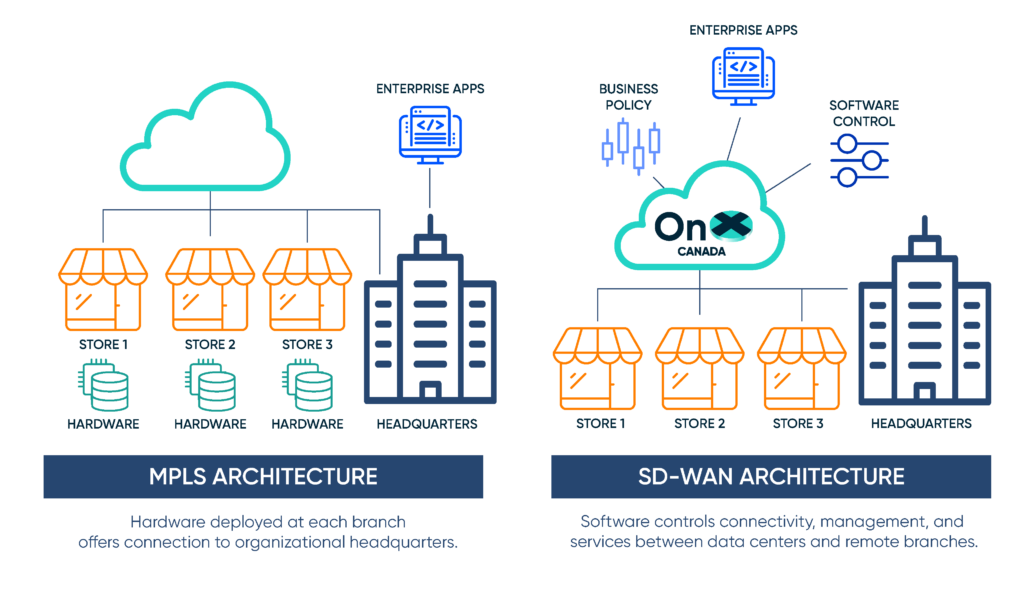
Key Takeaways
- SD-WAN technology offers enhanced performance and security for distributed networks.
- It simplifies management by unifying network control and monitoring.
- Cost-efficiency and scalability are significant benefits for modern enterprises.
- Deploying SD-WAN can significantly improve user experience across various locations.
- Security remains a key focus, integrating seamlessly with existing protocols.
Table of Contents
- The Growing Need for SD-WAN in Distributed Networks
- How SD-WAN Enhances Network Performance
- Boosting Security With Integrated Solutions
- Cost Efficiency and Scalability
- Improving User Experience Across Locations
- Key Considerations for Implementing SD-WAN
- The Future of SD-WAN in Enterprise Networks
The Growing Need for SD-WAN in Distributed Networks
In the modern age, expanding an organisation’s borders and time zones adds the challenge of facilitating communication and data transfer. Dealing with geographically distributed networks in traditional ways often leads to inefficient systems and high operating costs. Such networks are frequently plagued by business-damaging inefficiencies like high latency and downtime, which infuriate customers and lower productivity. That’s where SD-WAN comes in, tailored towards modern businesses. It integrates features like performance, protection, ease of use, and managed controls under one platform. Global businesses no longer struggle with distant legacy systems as SD-WAN effortlessly delivers the scalability needed to keep up with today’s rapid pace.
The shift away from traditional approaches to WAN architectures enables organisations to reap the benefits of SD-WAN. It offers features like enhancing local execution while providing centralised network control, a must-have for complex business operations in multiple regions. The approach makes network monitoring simpler, more streamlined, and more efficient while improving security and reliability.
How SD-WAN Enhances Network Performance
SD-WAN technology allows businesses to transfer data by controlling traffic to use the most efficient connections. SD-WAN aims to ensure optimal use of network assets while achieving the best possible cost-value ratio. Static path selection, as found in traditional networks, leads to backups and delays as surges happen. In contrast, Secure SD-WAN adapts in real-time, balancing dynamic load and preventing bottlenecks. This means that businesses can enjoy faster connections with fewer interruptions, which is critical for real-time applications such as video calls, cloud computing, and other services hosted on the internet.
The technology helps solve the aforementioned concerns regarding the reliable performance of duties and responsibilities by tailoring any packet to the broadband traffic that generates it. Because application responsiveness and functionality remain intact no matter where users are located, providing policies tailored to specific legal users becomes easy for businesses dealing with numerous jurisdictions.
Boosting Security With Integrated Solutions
Maintaining information security and network integrity is a priority and concern for many, especially since threats are becoming even more sophisticated. This is where SD-WAN networks stand out: by providing end-to-end encryption protecting all data in transit. SD-WAN can remove the access constraints placed on sensitive data and stop unauthorized access to telemetry collected from vital components. Moreover, businesses can easily enhance existing security measures without needing to replace their infrastructure, since SD-WAN meshes well with existing security protocols.
Apart from encryption, additional security protocols like firewalls and intrusion detection systems can be placed with SD-WAN. In addition to the cloud-based SOC, a single SOC centralises security management by controlling all SD-WAN security features. This aids IT teams to resolve conflicts that are derived from the multi-tiered IT landscape brought about by hybrid work models, as well as resolve security issues. Enterprises dealing with sensitive customer details need to take this additional measure to protect against data breaches.
Cost Efficiency and Scalability
SD-WAN is one of the new technologies pioneered by Cisco. The novel approach lowers operational costs and maintains the ability to integrate or purchase additional services, adding functionality and opening new opportunities. The hardware components needed to establish an office with a telepresence-capable conference room can be moved around without worrying about internet connectivity. Additionally, using a cloud solution enables one to easily lower teleport costs by not having to pay for IT staff who need to be onsite around the clock.
The scalability of SD-WAN makes it particularly attractive to growing businesses.There is no need to invest in extra resources to expand the network capabilities. Whether a company is opening new branches or merging with partners, scaling networks to address new demands is not an issue. This process is effortless in other industries like retail, where a business might have to expand rapidly and need a network infrastructure that keeps up with the pace.
Improving User Experience Across Locations
Providing a positive user experience is vital for business operations and customer interaction. SD-WAN improves the user experience with reliable, consistent, and high-quality networks at every site. Automated traffic management guarantees that sufficient bandwidth is supplied to every application, making it more productive.
Furthermore, SD-WAN helps high-performance applications like streaming, virtual meetings, and cloud-based tools by minimising delays and optimising routing. So, regardless of the employees’ positions, they can work together without tech hurdles. Operating without interruptions across borders breaks the boundaries for global companies. So all business units can work together and stay in touch.
Key Considerations for Implementing SD-WAN
Implementing SD-WAN solutions needs thoughtful strategy formulation. Within the organisation, the existing network topology and specific requirements must be evaluated to align the SD-WAN solution appropriately. Moreover, selecting a provider needs equal attention as businesses face the warranty of support and service aid.
Evaluate the alignment with the current SD-WAN infrastructure because it would smooth the integration process. By addressing these aspects, companies can maximize the benefits of SD-WAN, ultimately leading to streamlined operations and enhanced performance.
The Future of SD-WAN in Enterprise Networks
The advanced technology businesses that adopt will usher in a focusing era for SD-WAN. Alongside Iot, the trends towards a more mobilised workforce continually heighten the need for secure and expandable agile network solutions. The exceptional SD-WAN performance, key pillar of next-generation network agile structure, strategic approach to security and performance, makes significant advancements in technology expectations. Experts predict that when these technologies evolve, so will the customisation and responsiveness of SD WAN to enterprise environments.
The constant change and development within the SD-WAN sector are promising. It comes with innovative features tailored to business needs. SD-WAN, with its efficient network management, will help companies achieve the utmost level of potential through digital transformation with secure and dependable connectivity worldwide.




